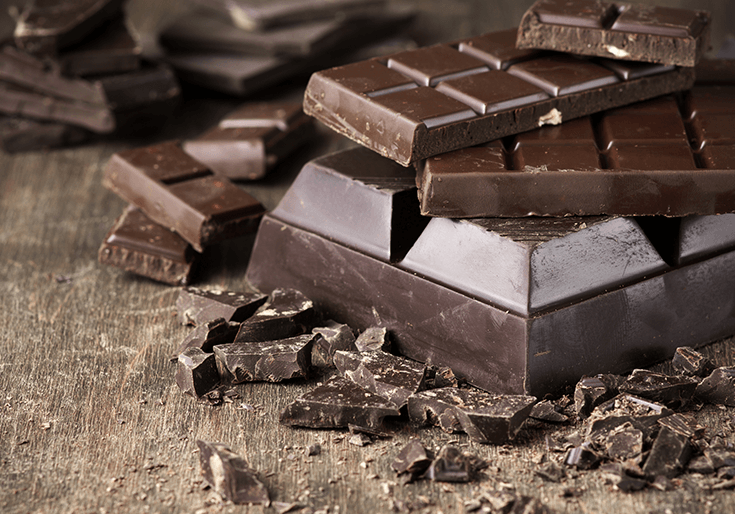
WHAT IS CHOCOLATE?
8200 Views
HEALTH INFORMATION

07, Apr 2018
The word “chocolate” is derived from the Aztec cacahuatl, meaning “bitter water,” and refers to the extremely bitter unsweetened drink the Aztecs made from ground cocoa beans and spices. Chocolate made its way from its origins in Mexico to Europe, and by the mid-1600s, numerous chocolate shops existed where patrons could sip the exotic drink. The first chocolate processing factory was built in London in 1728. By the mid-1800s, chocolate’s popularity had skyrocketed thanks to technological innovations that produced the first chocolate bars. Today chocolate is one of the world’s most beloved foods, with more than one billion people worldwide consuming some form of it every day.
Chocolate is made from the beans of the cacao tree theobroma, which aptly means “food for the gods.” It takes approximately 400 cocoa beans to make 1 pound of chocolate. These beans are processed to a sticky, bitter paste called chocolate liquor, which consists of about 53 percent cocoa butter and 47 percent cocoa solids. The chocolate liquor is then used to create a variety of chocolate products, all varying in ratios of cocoa butter to solids, and with varying degrees of additives such as milk and sugar.
Chocolate: nutrition
Chocolate contains very small amounts of copper, iron, zinc, and protein, but not enough to be considered a good source of these nutrients. The fat in chocolate is from cocoa butter, and is comprised of about 2/3 saturated fats and 1/3 monounsaturated fat.
Though some people may assume that chocolate contains a lot of caffeine, it has only trace amounts. One ounce of milk chocolate contains about 5 milligrams of caffeine, 1 ounce of semisweet chocolate usually has 5 to 10 milligrams of caffeine, and a 6-ounce cup of cocoa usually has 10 milligrams. For comparison, a 6-ounce cup of coffee contains 100 to 150 milligrams of caffeine.
Dark chocolate has large quantities of flavonoids called catechins, which may benefit heart health. However, processing cocoa into candy greatly reduces the flavonoid levels unless the manufacturers take steps to preserve those phytochemicals. And, of course, chocolate bars are loaded with sugar and calories. So enjoy chocolate in small amounts as the treat it is, not as a health food.


